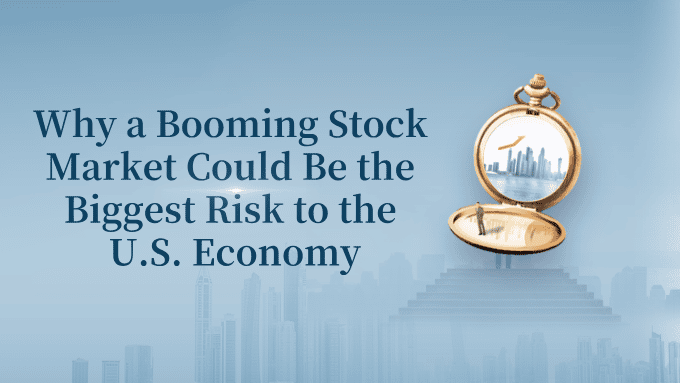
All eyes are on the September CPI report, set for release Friday, but some economists argue that inflation data isn’t the only thing investors should be watching. According to Moody's Analytics Chief Economist Mark Zandi, the biggest risk to the U.S. economy right now may not be tariffs, private credit, or even the banking sector—it’s the booming stock market itself.
$9 Trillion in Market Gains, But at What Cost?
Zandi told Yahoo Finance that the roughly $9 trillion in equity appreciation over the past year has fueled consumer spending among high-income households, a key driver of the U.S. economy. But he warned that if the market flips from bull to bear, that spending momentum could vanish quickly.
"Rising stock prices are crucial for wealthy individuals who drive consumption," Zandi said. "A reversal of this trend would be a real threat to the economy."
In his view, stock market risks now outweigh concerns about the banking sector or government shutdowns. With valuations stretched and edging toward bubble territory, the danger is that a sudden pullback could hit the very consumers who have been propping up growth.
Consumer Divergence Widens
The U.S. economy’s reliance on high-income spending is colliding with widening gaps in consumer behavior. Deborah Weinswig of Coresight Research noted that the spending gap between high- and low-income households has reached its widest level since 2020.
High-income consumers are still spending, often at warehouse retailers like Walmart and Costco, which have become favorites thanks to strong data-driven loyalty programs. Meanwhile, discount chains like TJX and Ross Stores are thriving as lower-income households stretch budgets by stacking coupons and chasing deals.
Weinswig predicts this divergence will only widen, creating a performance gap across the retail sector.
Spending Fatigue Setting In
Even so, cracks are showing. Deloitte’s 2025 Holiday Retail Survey projects overall U.S. consumer spending will fall 10% year-over-year, with all income groups planning to cut back. Even among households earning $200,000 or more, one in four are now "value-seeking"—delaying purchases, trading down, or waiting for sales.
Mike Daher of Deloitte said consumers are increasingly focused on value for money, and even high earners are approaching a "tipping point" in their ability to spend freely.
Warning Signs From the Top
At the Semafort World Economic Summit, Goldman Sachs President John Waldron highlighted the imbalance: premium air travel is booming, but low-end retailers are struggling under debt. "The pressure on the bottom of the economic ladder is enormous," Waldron said, warning that if affordability erodes further, the economy could face "even greater problems."
The Bottom Line
From concerns about a stock market bubble to weakening consumer demand, the U.S. economy is at a fragile crossroads. The September CPI will provide fresh clues on inflation, but the bigger question may be whether Wall Street's rally is masking deeper vulnerabilities. If the wealth effect reverses, the spending power of high-income households—the backbone of recent growth—could disappear just as quickly as it arrived.
